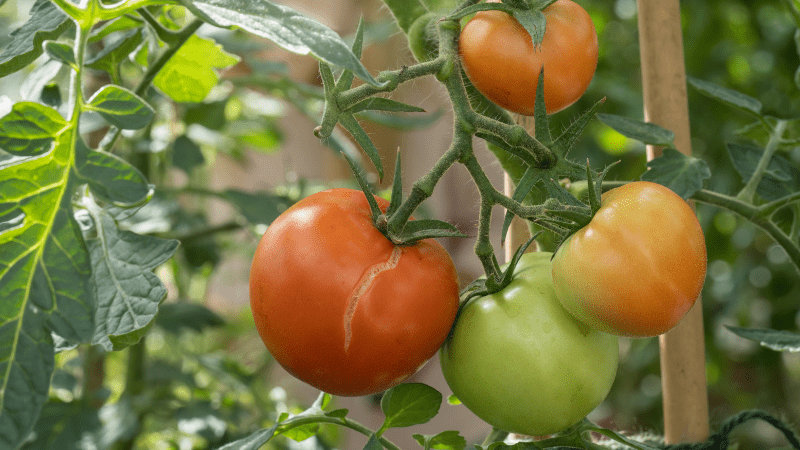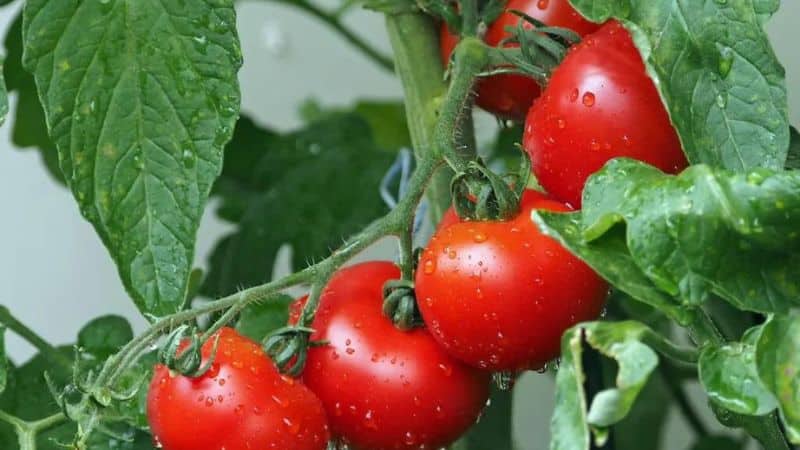Tomatoes are often thought of as full sun plants that need at least 6 hours of direct sunlight per day. However, too much sun can actually stress plants out, especially during the hottest parts of the summer. Finding the right balance between sun and shade is crucial for getting the best yields from your tomato crop. In this article, we’ll explore why tomato plants need sun shade, different methods for shading tomatoes, and tips for choosing shade tolerant varieties.
Why Tomato Plants Need Sun Shade
While tomatoes do require a good amount of sunlight to thrive too much sun exposure can have some downsides
-
Sun scald – Direct sun hitting fruits can cause burnt spots and cracks. Shade helps prevent this.
-
Heat stress – High temperatures above 90°F can stop flowers and fruits from setting A little shade cools plants
-
Moisture loss – Intense sun makes plants transpire more water. Shade reduces water needs.
-
Sunburn – Leaves can get burnt edges and crispy spots without protection.
Shading tomatoes is especially useful in hot climates like Florida, Texas, and California where summer heat is extreme. Even in cooler areas, periods of heatwaves may call for temporary shade solutions.
Aim to shade plants during the peak sun hours of 10am – 2pm when sunlight is most intense. This protects tomatoes while still allowing morning and evening sun.
Methods for Shading Tomato Plants
There are several effective options for providing sun shade over tomatoes in the garden:
Temporary Shade Solutions
-
Old sheets or burlap – Drape over cages or stakes for quick shade
-
Lattice panels – Diffuse and filter sunlight well
-
Umbrellas – Portable and adjustable shade source
-
Furniture – Place chairs or tables near plants for partial shade
-
Shade cloth – Lightweight material to drape over hoops
Permanent Shade Structures
-
PVC pipe frames – Build a frame and cover with shade cloth
-
Wooden arbors – Stylish way to shade a whole bed
-
Garden canopies – Retractable shades attached to posts
-
Pergolas – Provides dappled shade if vines are grown on top
Aim for 30-50% shade cloth that reduces sunlight but doesn’t cut it out completely. Support structures should be tall enough that plants aren’t touching material.
Choosing Shade Tolerant Tomato Varieties
While all tomatoes need sun, some varieties are more adapted to lower light conditions:
-
Cherry tomatoes – Small fruits require less energy to produce.
-
Early season tomatoes – Mature quickly before heat arrives.
-
Romas – Meaty fruits with fewer seeds to develop.
-
Siberia – Cold tolerant so adapts well to shade.
-
Oblong & plum shapes – Grow efficiently with less light.
-
Black or purple tomatoes – Darker pigment protects fruit.
-
Determinate types – Produce main crop before shade effects.
-
Dwarf & container varieties – Compact growth requires less light.
Prioritize early producers, high yields, and smaller fruited types when picking tomatoes for partial shade. Be sure to provide optimal water and nutrients as well.
Tips for Growing Tomatoes in Shade
-
Choose the sunniest spot available, even if it’s just 4-6 hours of sun.
-
Use determinate tomatoes that ripen within a defined window.
-
Prune leaves to open up the plant canopy and allow more light penetration.
-
Use reflective mulch like aluminum foil to bounce light up into plants.
-
Add supplemental lighting with grow lights if shade is unavoidable.
-
Stake/trellis plants so they can grow taller and capture more sun.
-
Pick small-fruited varieties that need less energy to produce.
-
Maintain optimal fertility and moisture to compensate for less sun.
While sun is still essential for tomatoes, a little judicious shading goes a long way in keeping plants happy and productive. Pay attention to how your plants respond and adjust shade levels accordingly. The right balance will lead to your best tomato harvest yet!

Why do tomato skins split?

Tomato skins split for several reasons, typically caused by moisture fluctuations, temperature changes, and the variety of tomato.
Here are the key causes:
- Excessive Watering: Tomatoes are prone to skin splitting when they absorb too much water too quickly. This can happen if you water too often or use a sprinkler system that over-waters the plants. The fruit grows faster than the skin can stretch, causing cracks to form.
- Fluctuating Temperatures: Rapid temperature shifts, particularly in environments like poorly ventilated greenhouses, can cause the fruit to grow unevenly. Hot days followed by cooler nights lead to stress on the fruit’s skin, increasing the risk of splitting.
- Variety of Tomato: Some tomato varieties are more prone to skin splitting than others. If you’re growing a variety known for this issue, extra care is needed to maintain consistent moisture levels and moderate temperatures.
- Nutrient Imbalance: Lack of key nutrients, particularly calcium, can weaken the skin, making it more susceptible to cracking.
To prevent skin splitting, avoid overwatering, maintain consistent moisture, and ensure your greenhouse or growing area has adequate ventilation.
Using shade cloth can also help regulate temperature and moisture, reducing the likelihood of cracking.
When to shade tomatoes?

Shading tomatoes is essential during periods of extreme heat or intense sunlight.
The best time to apply shade is when daytime temperatures consistently exceed 85°F (29°C), particularly during summer months. This helps to protect the plants from heat stress, sunburn, and fruit cracking.
Shade cloth should be used early in the day before temperatures rise and removed once the sun’s intensity decreases in the late afternoon.
Additionally, shading is particularly beneficial during the fruit-setting and ripening stages, as it prevents temperature extremes from interfering with these crucial growth phases.
According to research, shading that reduced daily integrated solar radiation to 5-6 MJ.m(-2) effectively increased marketable fruit yields when the air temperature exceeded 25 degrees C.
A Garden Shade Cloth Plant Saving Guide (Tomatoes, Peppers, Cucumbers, & Fall Crop Examples)
FAQ
What is the best sun shade for tomato plants?
Conclusion: White shade cloth (with about 35% shading) is the superior option for most tomato growers. It offers better protection against summer heat, reduces the risk of heat stress, and creates a more favorable environment for healthy tomato growth.
How do I protect my tomato plants from too much sun?
This works best with smaller tomatoes, as larger tomatoes need a minimum of 6 to 8 hours of sun daily. 3. If you can’t find afternoon shade, create some by using shade cloth over your plants. Shade cloth comes in many thicknesses – be sure the cloth you’re using doesn’t block more than 50% of the sunlight.
Do tomatoes like morning or afternoon sun?
-
Morning Sun Benefits:
- Drying Dew: Morning sun helps dry the dew that collects on tomato leaves overnight, preventing fungal diseases like blight.
- Initiates Photosynthesis: Morning sunlight is crucial for initiating the plant’s daily growth cycle and photosynthesis.
- Less Harsh: Morning sun is generally less intense and harsh than the afternoon sun, especially during hot weather.
- Drying Dew: Morning sun helps dry the dew that collects on tomato leaves overnight, preventing fungal diseases like blight.
-
Afternoon Sun Benefits:
- Extends Growth Cycle: Afternoon sun exposure extends the daily energy and growth cycle, providing tomatoes with the necessary sunlight for optimal growth.
- Warmer Temperatures: In cooler regions, afternoon sun can provide additional warmth, which can be beneficial for tomato growth.
- Extends Growth Cycle: Afternoon sun exposure extends the daily energy and growth cycle, providing tomatoes with the necessary sunlight for optimal growth.
-
Ideal Sun Exposure:
- Tomatoes typically require at least 6-8 hours of direct sunlight per day.
- While they can tolerate some shade, full sun is generally preferred for optimal growth and fruit production.
- Tomatoes typically require at least 6-8 hours of direct sunlight per day.
-
Hot Climates:In hot climates, it’s best to provide shade during the hottest part of the day to prevent sunscald on the fruit and leaves.
-
Los Angeles Specifics:As Los Angeles has a Mediterranean climate with hot summers, consider providing shade during the hottest part of the afternoon to protect your tomato plants.
Will tomatoes grow under 40% shade cloth?
Heat-loving fruits and vegetables such as tomatoes, cucumbers, and strawberries, generally need shade cloth that is around 30% shade, meaning that about 70% of the sunlight gets through to the plants. Many flowering plants and many fruits and vegetables generally like 40%-50% shade.
